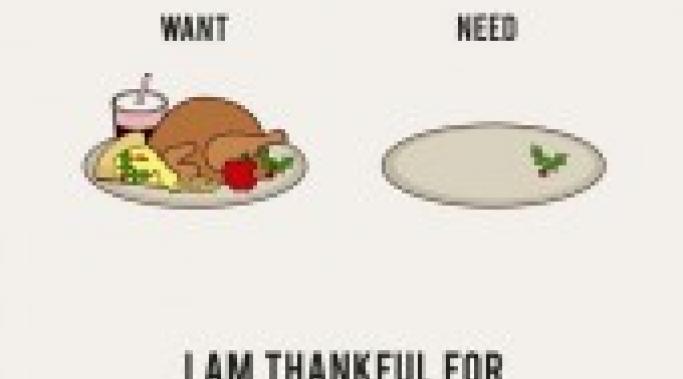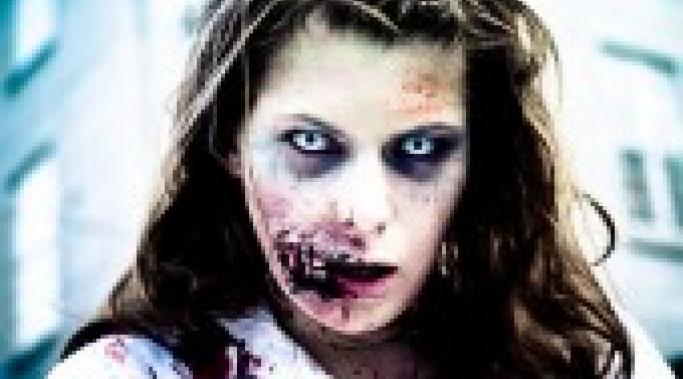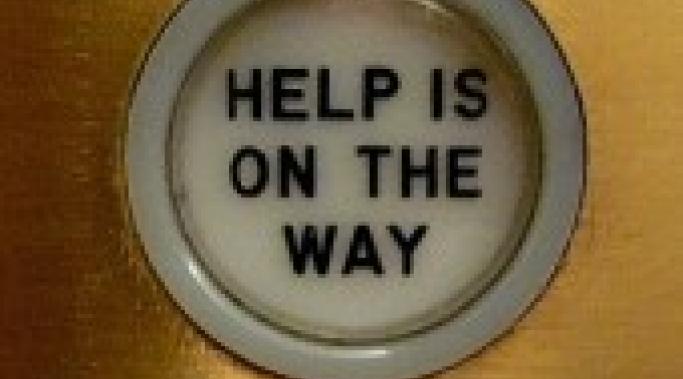Mental illness is no mere fad, fashion, or lifestyle - it is a way of being. Each particular form of mental illness carries with it a vernacular, a unique configuration of specific attributes reflecting the experiential texture of that milieu. Specific mental illnesses have a diverse palette of associations including sights, smells, sounds, tastes, colors, and even musical forms.
Many of the most popular mental illnesses even have their own favorite day. For example, in the expansive realm of compulsive overeaters there is no day to match Thanksgiving, which, all protestations notwithstanding, is a virtual love song to gluttony. Gamblers, by contrast, live for the arrival of Super Bowl Sunday when even the most risk averse and timid in our midst throw caution to the wind and bet cash money on the outcome of an event they cannot control and barely understand.
Alcoholics, a notoriously hard to please group, are known to celebrate pedestrian events which go unnoticed by the rest of us, indeed, for them all of human existence is either worth celebrating with a drink, or worth fleeing by means of a drink. Even within this context New Year's Eve occupies a very special place for them. Stripped of all religious consequence, New Year's Eve offers no distraction from the business at hand, that is, two-fisted tippling resulting in a scorched synapse policy rendering participants tight as boiled owls, speaking with lords, and ultimately calling for Ralph.
Funny in the Head
Much can be learned about a society by looking at its mythology. Had we time and inclination, we might consider the Tooth Fairy, Easter Bunny, Jolly Green Giant, and even Mickey Mouse with an eye to discovering what they reveal about our cherished values, aspirations, darkest fears, and cultural archetypes.
Sadly, since time is at a premium, we must move directly to an examination of that most venerated societal celebrity, Santa Claus. It will be clear after only a cursory examination that the disturbing psychological make-up of this (spoiler alert) fictional character has a great deal to say about the inner workings of the culture from which he emerged.
For reasons we might want to explore at some other time, I spent over 30 years toiling in the corporate vineyards as an advertising copywriter - an occupation which enjoys a level of social prestige roughly equivalent to that of garbage collector, lawyer, and snake oil salesmen - although to be sure - the latter group is begrudgingly afforded a modicum of respect since almost everyone abhors a squeaky snake. I know I do.
But I digress. Writers, as you know, are a disreputable lot. As a rule they live in culverts, subsist on scraps of food left by others in greasy spoon diners on the outskirts of town, frequently showing up for work with three days of stubble, pockets crammed with losing lottery tickets, reeking of bourbon and cheap cigars. The men are even worse!
As a bipolar dipsomaniac with a chronic attitude problem that includes contempt for authority, you can imagine I lost and found and lost employers the way others misplace car keys. Some jobs were submerged deep within the bowels of soul-less corporations shamelessly exploiting the witless populace, while others resided in neurosis factories referred to as advertising agencies where paranoia, throat slitting, and British wardrobes were passed off as creativity.
Thanksgiving means different things to different groups, all protestations notwithstanding.
For Native Americans it is a reminder that simple acts of generosity can result in the loss of a homeland.
For turkeys it is an opportunity to sacrifice in service to the nation, a sacrifice made freely because among turkeys it is well understood that pleasing humanity is the ultimate responsibility, indeed, the highest calling, for all animals.
Among alcoholics, Thanksgiving is known as the official start of Drinking Season, which does not conclude until the very last play of the Super Bowl.
No matter which disorder, illness, condition, syndrome, or demon nips at your heels, Thanksgiving has much to offer. Take gluttony as an example, flagship of the Thanksgiving neurosis armada. Thanksgiving unapologetically celebrates the American desire to have too much of everything now until it is gone.
Since slightly before the dawn of time man has set his gaze on the immensity of space and wondered this - given the billions and billions of tiny dots out there, which are probably quite similar to the thing upon which I reside, circling the sun, or other large objects - and knowing what I do of statistical relationships and relationships of probability, which is to say, the likelihood of events - how could I possibly be alone in this universe?
When you really stop and think, isn't it far more likely that somewhere, somehow, on one of these lonesome magma clumps there is a form of life - however humble - striving ever upwards along its agonizingly slow evolutionary rise which, ultimately, will lead, over endless millennia of failed experiments, to something resembling me, and when I say me I do so because we must take as our starting point the assumption that humanity is what they refer to as The Crown of Creation and as such is the standard by which all others are measured, assuming there are others to measure, which we are, because frankly that is the point of this exercise.
So let us argue that, given an infinite amount of time to do so, and an infinite amount of government funding to squander, not to mention a rugged little spaceship able to withstand asteroid collisions, exploration would inevitably discover life of one sort or another. According to the legions of marginally employed scientists who have time to untangle these hypothetical quandaries, this is a given. Given, perhaps, but their belief sheds no light whatsoever on the presence, or lack, of mental illness among intelligent aliens.
On Halloween, across this fine land of ours, little bourgeois American children dress up like who and what they fear and haunt the leafy cul-de-sacs of suburban housing developments stuffing Walmart bags full of sugar-rich candy certain to kick their ADD into high gear. Yes, it's a night of ghouls, ghosts, vampires, villains, lobbyists, gangsters, mass murderers, bankers, assassins, blackmailers, and monsters of every imaginable description. While the holiday simply oozes good-natured fun and games, it also casts a sad shadow across our culture. This is because these characters, so exploited for their shock appeal, are frequently underserved by the mental health community. What do I mean by this?
Much has been written in recent years about the undead. The undead face a great deal of ridicule, mostly because they walk so slowly, and are not particularly frightening. However, the undead are falling apart, frequently losing bits and pieces as you watch, and most troubling of all, eat brains. One must wonder how far some of them must go in order to get a complete meal.
For children of all ages, Halloween is a time when vampires, zombies, murderers, psychopaths, the undead, succubae, and other creatures of the night roam far and wide across the landscape, terrorizing young and old and demanding food in exchange for safety from unpleasant tricks, rather like a Mafia protection scheme.
But the American public is difficult to shock since it subsists on a steady diet of horrifying fare including political ineptitude, reality TV, and social media, in itself a swamp of deception, intrigue, and awesome-sauce. Hollywood contributes to this atmosphere of doom, fear, paranoia, dread, terror, angst, despair, misery, alienation, and fin de siècle ennui by churning out an almost endless supply of apocalyptic dystopian love songs featuring all manner of dark vision. The result is a jaded populace.
When an elite SWAT assault force, comprised of battle-ready psychiatrists from some of our nation’s most horrifying backwaters of mental instability, leaped from the belly of a B-52 bomber in Washington, D.C. today, tourists and off-duty policeman alike were stunned and amazed. Falling in tight formation, these plucky providers landed without incident in the Capitol building parking lot. After a few minutes of chute detaching the sanity squadron marched single file into the quiet, once-dignified chamber housing a hopelessly deadlocked House and Senate.
Moments later, Quentin Nightingale, Secretary of Sanity, made a surprise appearance on the Emergency Broadcasting System. “Ladies and gentlemen," he began, “at 12:15 p.m., eastern standard time, an assault team of specially trained psychiatrists with boots on the ground, hand-to-hand experience facing extreme insanity staged a surprise occupation of Congress. These skilled, compassionate medical professionals will control Congress until, and not before, Congress can collectively demonstrate to a duly appointed panel of medical professionals that it is no longer insane.
We have known for some time about genetic predisposition to various forms of mental illness, snarkinuss eruptus and clinical depression to name only two. But if an illness is to be passed down from one generation to the next, it must have a point of origin. Now, researchers at the Department of Anthropological Psychology at the University of Basingstoke-on-Trent think they have discovered the answer.
Professor Chumley Meriwether Throckmorton announced that a recently completed in-depth study demonstrates conclusively that Neanderthals were the first humans to experience what is now referred to as clinical depression.
Professor Throckmorton elaborated at a recent press conference. “Neanderthals looked upon the world very differently than modern man. For them the world was vast and unknowable, an endless expanse of hostility and weirdness. Animals, inclement weather, and a noticeable lack of indoor plumbing loomed malevolently, providing an ongoing cavalcade of hazards.
It is widely acknowledged that the United States is the greatest country in the world; beating out such plucky contenders has Azerbaijan, Bongo Bongo, and Chad. It is also widely acknowledged that the United States has the best government money can buy. Within the cornucopia of services provided by our government is the character-building exercise known as “the shutdown”. Random government shutdowns, frequently sneaking onto the scene under the guise of improbable, preposterous power plays, posturing peacock parades profiling pointless politicos, offer the American public an opportunity to build up endurance, patience, and the ability to keep down unpalatable food. This is no mere unintended consequence, quite the contrary, it is a behind-the-scenes character building service.
In order to fully appreciate just how much thought the government puts into this exercise, consider the amount of pre-printed literature ready for distribution at a moment’s notice. As you know, government shutdown immediately cripples all mental health resources nationwide since these are considered nonessential. (Essential services include congressional salaries and health benefits, military spending, and lobbyist shoehines.) Congress, well aware of the impact on America's homeless, hapless, and harmless, commissioned a panoply of brochures with foolproof tips mentally ill people can use to help themselves while Congress is helping itself. (Note that Congressional salaries continue to be paid during a shutdown. This textbook example of insanity leads one to wonder how quickly the shutdown would be remedied if all congressional salaries were put on hold until it was.)
Here are some helpful ideas for mentally ill people dealing with the disappearance of federally funded mental health care.









